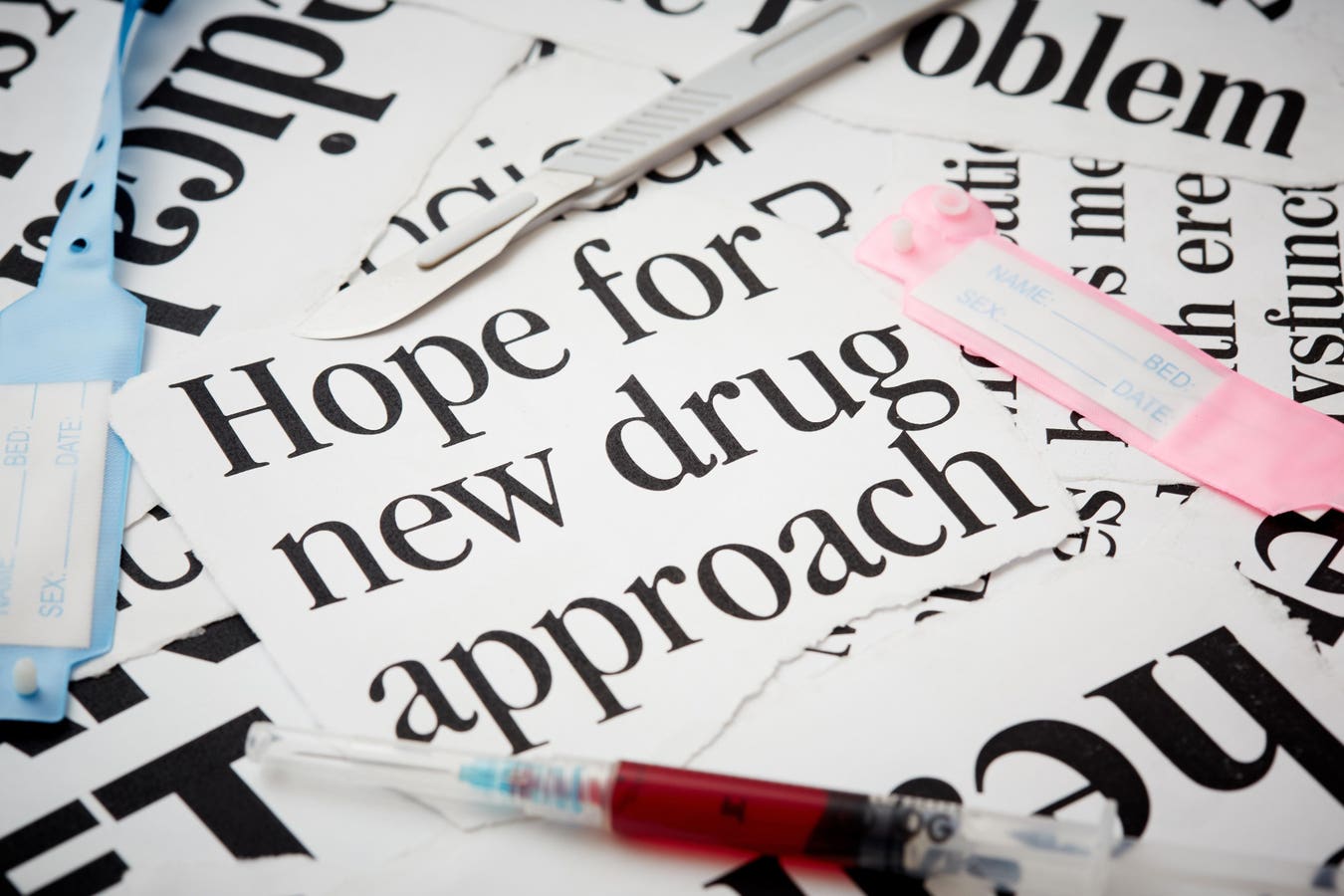In a group of health-related headlines, one says “Hope for new drug approach.
getty
As government-supported research in the US is being decimated by funding cuts, it was refreshing to attend REMEDi4ALL’s international drug repurposing conference this past spring. The European Union and private donors fund this consortium of 25 international organizations. For now, much of their focus is on rare diseases—defined in Europe as one affecting 5 in 10,000 people, or 300 million globally. (The U.S. definition is affecting fewer than 200,000 Americans). According to the National Institutes of Health, there are approximately 7,000 rare diseases affecting between 25 and 30 million Americans, and only 500 have treatments available.
What Is Drug Repurposing?
Drug repurposing is the process of finding a new use for an existing drug, often one approved for another condition.
Repurposing is of growing interest because it can be much faster and less expensive than de novo drug development, since the groundwork for drug development with preclinical and safety testing has already been done. Repurposed drugs can often go directly into Phase 2 or Phase 3 trials. Some estimates are that the costs to develop a repurposed drug for a new indication are $300 million, compared to $2-3 billion for a new drug and that the time it takes is 3-12 years for a repurposed drug, compared to 10-17 years for a new drug.
“The REMEDi4ALL consortium brings together a unique combination of expertise to address the complexities of drug repurposing.” EATRIS is the project coordinator, providing the European Research Infrastructure Consortium (ERIC) focused on translational medicine. REMEDi4ALL brings together the building blocks needed for a drug’s development, from drug discovery scientists to patient representatives, regulators, funders, the generics manufacturing industry, health economics experts, and others.
Anton Ussi, Operations & Finance Director at EATRIS’s ERIC, explained, “Two elements have conspired to bring it all together now. One is that our understanding of the biology is getting better due to advances in the ability to really probe those pathways. So we can say, ‘Oh, there’s a common pathway here, this disease, that disease, so maybe that drug can work’ By repurposing old drugs, you’re also using the drug as actually a tool to interrogate that biological pathway as well. So academics like repurposing studies because it helps them interrogate the actual biological pathways.” Secondly, the pressures of healthcare costs make repurposing very interesting as a route to support in reducing costs, but the repurposing eco-system is not yet working efficiently. He added, “Projects like REMEDI4ALL was Europe’s recognition that we have a problem. We need to make this pipeline a bit more seamless and try to bring the value chain together.”
There was an array of talks at the conference with several notable examples of successful drug repurposing garnering particular attention.
Malaria
Malaria is becoming resistant to commonly used insecticides. Nitisinone is used to treat a rare disease, hereditary tyrosinemia type 1, caused by excess tyrosine in the blood. By making blood toxic to the mosquitoes, preventing them from laying eggs, Nitisinone is being repurposed as an antimalarial.
But malaria is primarily a disease of poverty. The current administration has cut off research and support for USAID, so some fear a rapid rebound in malaria cases.
Motor Neuron Disease
Suvankar Pal, a neurologist from the University of Edinburgh, described Motor Neuron Disease as neurodegenerative disease, like Amyotrophic Lateral Sclerosis, aka Lou Gehrig’s disease. MND affects people with weakness in their arms and legs, swallowing, and speech difficulties. There may also be problems with memory and thinking. Pal explained that it is difficult to diagnose and may take a year to do so. Sadly, most people die within two to three years of diagnosis, and 30% of people die from respiratory failure within the first year.
There is only one drug approved for MND, and riluzole only improves symptoms for two to three months.
https://mnd-smart.org/about/about-mnd-smart
Pal and other researchers at MND-SMART are testing drugs in innovative ways to speed the process. Instead of testing drugs sequentially, one-by-one, they are using a multi-arm, multi-stage, adaptive platform trial with one shared placebo arm. It is “adaptive” in that ineffective drugs can more rapidly be spotted and stopped for futility, and new drugs can be added as additional arms in the trial. The trial is using repurposed drugs —amantadine, used for Parkinson’s disease; memantine, used for dementia; trazodone, from depression; and tacrolimus, used in transplantation to prevent rejection. Also novel is that there is a Patient Advisory Group involved at every level. The PAG was essential in shaping the trial to be decentralized, with elements like obtaining consent remotely, video conferencing-based follow ups, electronic diary cards and validating outcome measures, Pal explained. The PAG epitomizes the goal of many disability groups: “Nothing about us without us.”
Isopropyl Alcohol
Matt Might, Ph.D., director of the Precision Medicine Institute at UAB, shared a fascinating case. He’s a strong proponent of using AI in solving complex patient cases. He’s previously explained that there are four questions you should ask when trying to understand the molecular mechanisms involved in a disorder that may lead to therapeutic hypotheses:
“Is it overactive? Is it under active? Is it missing? Or is it toxic? And based on which direction you go, there’s a playbook behind each of those.”
Might told us about a 19-year-old woman who weighed only 75 lbs. due to intractable vomiting. She had tried more than 25 drugs without success. Might used AI to read through thousands of articles, listing all the interventions that had been tried. The AI computer program came up with three papers suggesting the use of inhaled isopropyl alcohol, sniffing an alcohol pad. They tried it with this teen with dramatic results. Isopropyl alcohol has now been shown to be effective in other trials. Within six months, the woman weighed 125 lbs, resumed a normal life, and got married! The alcohol pads are now recommended for emergency department use as an effective and inexpensive treatment for nausea and vomiting.
Recurrent Respiratory Papillomatosis
Respiratory papillomas are wart-like growths on the vocal cords and trachea. Human Papilloma Virus (strains 6 and 11) is passed during pregnancy from a mother to a child and causes the lesions. Most often, that mother may never have known she was infected with genital HPV. The growths can block the vocal cords or airways and usually requires repeated surgeries from infancy on.
Kim McClellan, president of the Recurrent Respiratory Papillomatosis Foundation, shared how she has had 250 surgeries, often every couple of months.
She, and many others, have taken bevacizumab (generic of Avastin) which, by blocking the VEGF blood vessel’s growth factor, stops these tumorous growths.
Physicians were reluctant to give McClellan this chemotherapy for a “benign” disease. One of her major messages to doctors is to “let the patient decide what risk is acceptable to them, especially with rare diseases, because quite often to us, the rare disease and the current way it’s managed is far riskier than some side effects from a drug.”
While Avastin is very effective, McClellan noted that in the world of profit-driven pharma, getting a new indication for an off-patent drug is not going to happen; it’s simply not going to be profitable. Insurance won’t cover the drug, either, although treatment with these biosimilar drugs is far less expensive than the repeated surgeries are, to say nothing of being less traumatic for the patient.
In a piece of recent good news for the Recurrent Respiratory Papillomatosis community, the FDA just announced its approval of Papzimeos (zopapogene imadenovec-drba), an immunotherapy directed against HPV for RRP, after half the patients in a clinical trial had resolution of their lesions, providing a much needed alternative therapy to repeated surgery. Unfortunately, the drug is currently only approved for adults.
Conclusion:
It is heartening that the importance of drug repurposing has apparently been recognized by the current administration, with the draft MAHA report saying, “The NIH and FDA will jointly investigate opportunities to strengthen the use of repurposed drugs for the treatment of chronic disease, while harmonizing authorization processes through collaborative clinical trial designs to achieve FDA approval.” Hopefully, they will recognize the greatest need is for rare diseases and for infections, for which there are few treatments.
It takes millions of dollars and many years to develop a new drug. Repurposing drugs holds great promise for improving access to treatments, particularly for rare diseases. It is encouraging to see the progress highlighted by REMEDI4ALL at the international drug repurposing conference. Hopefully the US will take note of the incredible advances being achieved through the investment in drug repurposing, particularly by the Europeans, and work to maintain US leadership in this field, in collaboration with international partners, like EATRIS.









